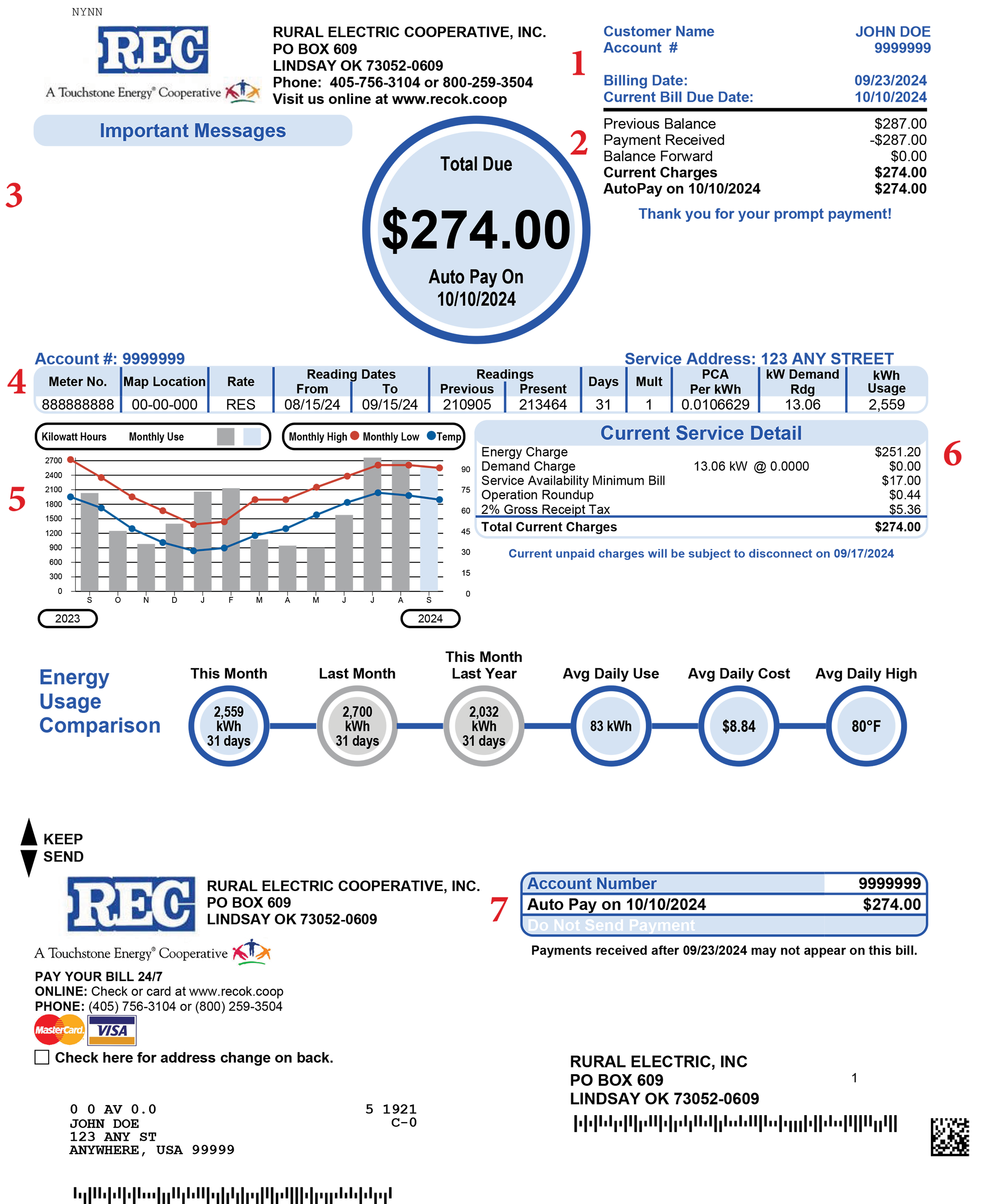Below is an example of a typical residential bill, along with a brief description of the various components. If you still have questions about the bill, please call our Customer Service Department at 405-756-3104 and a representative will gladly go over your bill in detail.

-
Your account number and current payment due date.
-
Service summary shows summary of your transaction history and total amount due.
-
Important messages will appear in this area.
-
Account number, service address, meter number, map location number, reading dates and usage information provided.
-
This kWh usage history chart provides you with 13 months of data for your location.
-
Current charges for your electric bill.
-
Account number and amount due. To ensure proper credit, please detach and return the bottom portion with your payment.
